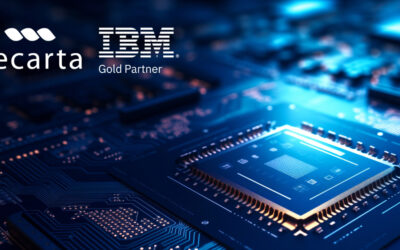This question has been out there even since the inception of the product in the 1970s when IBM’s Future Systems project looked destined for the trashcan; however, key elements were saved and launched as the IBM mid-range product called the System/38. Some thirty odd years later a product derided as a “toy” by technocrats and not always encouraged its maker but loved by those who understand it soldiers on.
IBM kept a firm cap on the high-end performance and controlled adoption by only actively selling it into the mid-marketplace. S/370 revenues had to be protected and System/38 provided the same function and performance (where there was overlap) at considerably less cost (product, development and support costs). Many IT people both sellers and users didn’t want the secret to be widely known. Job protection and career enhancement were also at stake.
The real secret of the system is that software integration is performed by IBM in Rochester; this also gives the system its legendary reliability. It is also a bit of a “black box” you don’t need a DBA and disk space has always been managed by the system; overall, you might say it was an early, outsourced technical support offering.
Even today the iSeries requires significantly less fix updates compared to a Windows machine and perhaps only one per year requires an IPL – and all this on an Enterprise Class system.
So no large IT departments and, actually, if you were selling the product, less sales effort per sale.
However, many of the benefits of the system were, for whatever reason, hidden from the not very IT savvy as the rise of immature offerings such as Windows and UNIX in the late eighties attested.
In addition and somewhat perversely many techno-savvy IT Managers completely understood the product but wishing to grow their empires were attracted by the career enhancing benefits of managing the complexity and large IT departments that UNIX or mainframes provided. As a Swiss IT Director once put it to me – “Mainframes go down much better at dinner parties”.
The main technology attraction was, of course, its database. S/38 was one of the first implementations of a relational database even if it didnât quite follow all of Codd’s principles. To this day companies who really want to work their data get the most from the system; thus its popularity in retail and similar businesses.
So an IBM classic – a very popular IBM product but one IBM itself was somewhat shy about.
By the time the IBM got around to releasing the AS/400 in the late 1980s the pent-up demand was huge and the product’s new lease of life headed it towards its peak. The AS/400 even broke out of the SMB marketplace into the corporate and this enhanced sales further and has probably secured the future of the product.
In fact, therein lies a tale; in the early days the system’s main users were the savvy mid-size SMB companies whereas now many of the system’s most committed users are the savvy large enterprises. And, of course, many MSPs have been attracted by the low cost of ownership. In fact, anyone who actually pays for the full cost of IT has got to find the system attractive.
One of the world’s most successful banks deploys large iSeries in a core business. And strangely, because many iSeries users are now large enterprises that make up IBM’s bread and butter, the iSeries is actively developed by IBM as never before.
So why do people use Microsoft Windows not to mention UNIX (although IBM’s AIX would appear to be the last man standing in this marketplace) and now LINUX.
In general terms it’s been the lure of low upfront capital expenditure with little understanding of the follow-on costs (hardware that becomes out of date more quickly, hidden support costs and inferior reliability etc etc).
Nowadays in SMB companies the iSeries server can be lost among the ten or tens of Wintel servers so its advantages are diluted since the staff are already employed and required to run around updating Intel server etc. Conversely, large Enterprises installations that involve complex UAT and Test/Dev environments (utilising the virtualisation capabilities) are frequently run by one or two operational staff and this has made the iSeries extremely popular; and no DBA, of course. Maybe this is the fulfilment of IBMâs original Future Systems concept?
If you are an SMB customer and you have implemented SAP on, say, a Wintel cluster and you have a problem, SAP will ask you to check the software levels on every component one by one and if there is one discrepancy will do nothing till you rectify it. No such problem with iSeries; it’s all been validated already in Rochester.
And then there is the move towards LINUX. Another round of the innocent or naive adopting something that looks cheap only to find they are an experimental testing ground until it matures to the level of iSeries?
Personally, I have sold lots of S/370 (Z Series), AIX (large SP instances), Lintel (both HPC and large Commercial clusters) and, yes, even iSeries.
I have to say that I have never really undersood why there isn’t more iSeries out there – assuming that robustness, reliability, low cost of operation and ease of implementation are the sort of things users might like. Maybe a lot of people just like risk? And, of course, we are all grateful for the job creation and hardware capacity requirements provided by Microsoft, ORACLE and Co.
Maybe you should look at what iSeries could do you for today?


